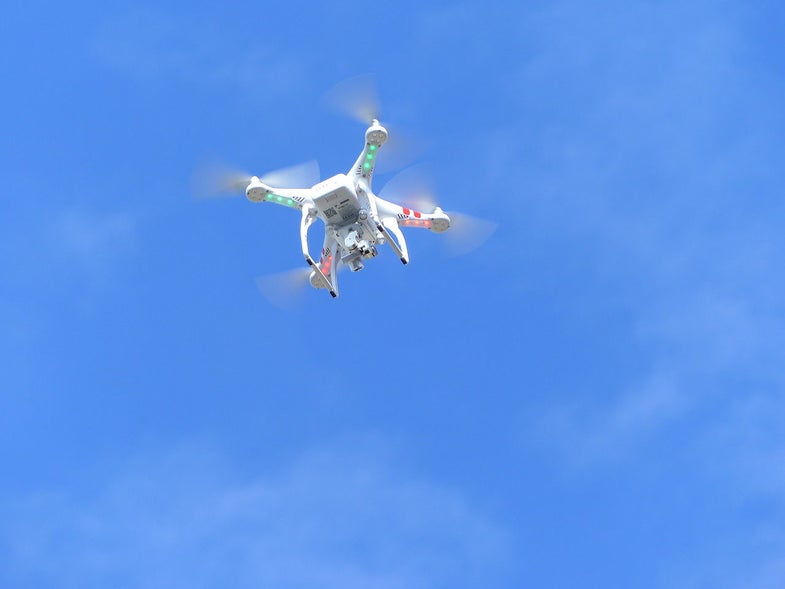Here’s How Companies Are Actually Using Drones
Mostly photography, says the Center for the Study of the Drone

How are companies using drones? There’s a lot of speculation about the future of the drone business in America, with promises that the small, unmanned flying vehicles will transform everything from farming to package delivery, and will do so while generating billions and billions of dollars. We can’t quite see the future, but we have something almost as good: Bard College’s Center for the Study of the Drone published a report today about the people actually using drones for work and research. It’s a snapshot of the drone industry as it exists right now, and a glimpse at how it will transform into the future.
Almost 3,000 businesses, universities, nonprofits, and research groups in the United States are authorized to fly drones. Those are different from the roughly 400,000 hobbyist drone users who registered their craft with the FAA and are flying for purely recreational purposes. Instead, the Center looked at Section 333 exemptions, where companies file with the FAA for permission to fly drones for business reasons. These authorizations include a motorized paper airplane, and one company that wanted permission to fly 324 different types of drones. Those are outliers.
Most of the drones authorized by the FAA, according to the Center, are DJI quadcopters. Or, more precisely, there were 6,026 aircraft listed in the exemptions, and of those, 3,967 were DJI models, with 2,176 of the DJI models being variants on its Phantom series.
So what are businesses doing with their DJI quadcopters? Taking pictures mostly. Photography took 29 percent of proposed operations and Real Estate took 18 percent, with the two uses covering 47 percent of total proposed drone operations. The next largest categories–Construction, Utilities/Energy/Infrastructure, and Agriculture–are all roughly equally popular, each representing about 11 percent of intended operations and appearing in about one-in-five exemptions. Florida and Colorado are, by population, the most disproportionately represented states, while FAA test site New York is the most underrepresented by population.
So what does it mean? Well, a lot of that depends on what the FAA does next. Congress is currently debating an FAA reauthorization bill, which is supposed to clarify and spell out many of the big questions left undecided by the 2012 FAA reauthorization. These include the status of model aircraft, the weight threshold for registering drones, rules for commercial use, whether “beyond line of sight” flight is allowed, and others. The FAA can authorize professional use of drones through exemptions under the current system until July. The report doesn’t end with any recommendations for Congress. Instead, it simply presents a solid, concise summary of the facts as they are, and hopes that Congress will use them to make an informed decision.
Read the full report, and if you like, encourage your local member of Congress to do the same.
